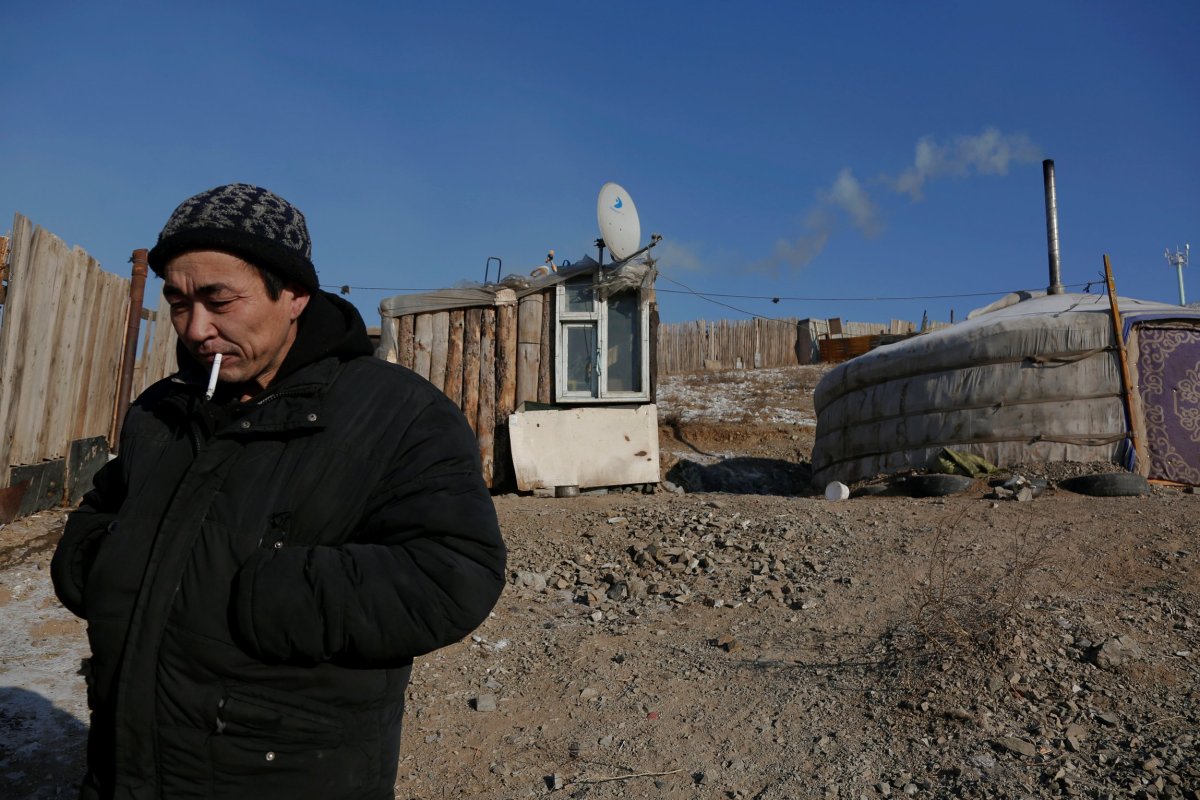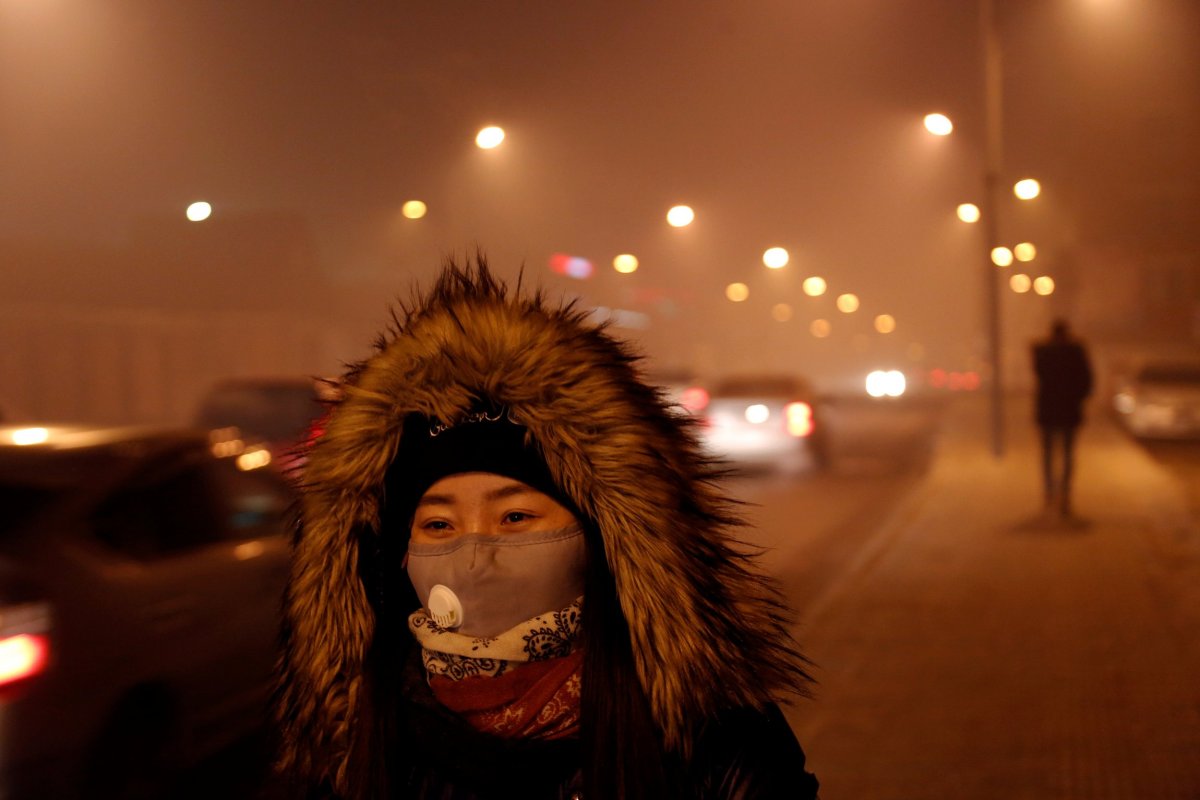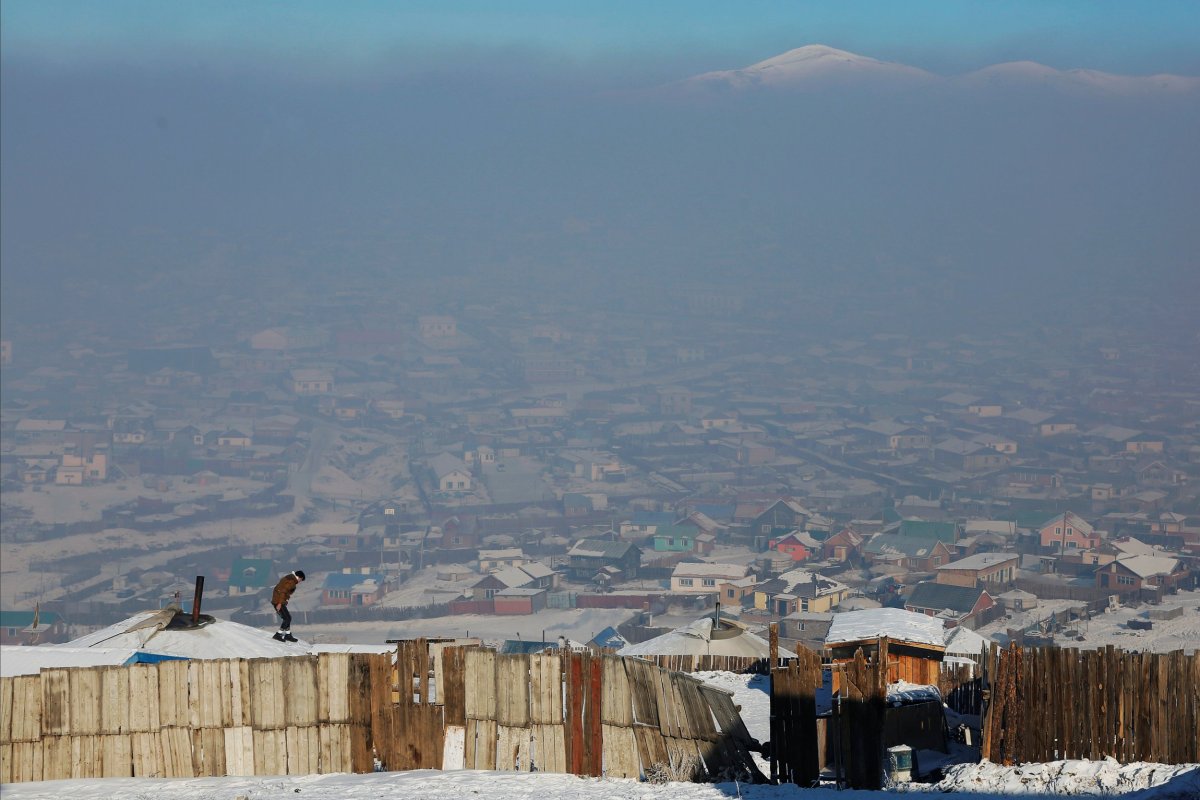
It feels like dusk, but it's only 11 a.m. In Ulaanbaatar, Mongolia's rapidly expanding capital, light falls in a soft yellow haze over the centre and surrounding suburbs. Coal smoke fills the air, interspersed with a more acrid, throat-tickling taste of burning plastic. Ulaanbaatar is one of the world's most heavily polluted cities—in December it experienced pollution levels five times higher than in Beijing. For families, trying to survive in the world's coldest capital is expensive: many throw everything onto the family stove—old shoes, tyres, and scrap plastic.
The city's center has modern skyscrapers that look out over a sea of Soviet tower blocks. Beyond this brutalist crust are 180,000 gers, or yurts, home to the city's most recent arrivals. Here, tree stumps dot the landscape, felled by city residents for essential fuel.
Twenty percent of Mongolia's population have migrated to Ulaanbaatar over the past three decades. Weather patterns, called dzud, have forced many to leave their traditional way of life herding cattle and sheep and move to the capital. Dzud is an ultra cold-weather phenomenon believed to occur in five-yearly cycles, but has been increasing in frequency, especially in the Gobi Desert region of Mongolia. One million animals died last year due to the deep freeze, often buried neck-deep in snowdrifts. In 2009 nearly eight million animals were wiped out in one of Mongolia's worst ever winters, destroying the herds of 9,000 families. The dzuds ruin the farmers' livelihoods, and due to lack of social support systems, the only choice left is to move to Ulaanbaatar and find a job.
As more people arrive in the city in their gers, the number of stoves increases too, each belting out enough heat to cook three meals a day and heat the cold gers through winter. The pollution levels that come with them are proportionally huge: 80 percent of all pollution in Ulaanbaatar is caused by ger stoves, according to the World Health Organisation (WHO). The rest is caused by transportation (10 percent), thermal power plants (6 percent), and solid waste (4 percent).
The levels of fine particulate matter (PM2.5), part of what causes pollution to be damaging to human health, have been recorded as 80 times higher than WHO guidelines, and the organization predicts the situation will worsen over the next 10 years. On December 16 the level of PM2.5 peaked at 1,985 micrograms per cubic metre (µg/m 3 ). The WHO recommends PM2.5 exposure of no more than 25µg/m 3 on average over a 24-hour period.

This winter, the rate of pollution-related pneumonia among children has been so high that the city's hospitals are full. It is now the second most common cause of mortality among Mongolian children, accounting for 15 percent of all deaths. A 2011 study by Ryan Allen, associate professor of environmental health at Simon Fraser University, found that one in 10 deaths in Ulaanbaatar can be attributed to air pollution. Researchers studying the impact of pollution estimate 29 percent of cardiopulmonary deaths, and 40 percent of lung cancer deaths in Mongolia are caused by pollution.
In a bid to fight the recent outbreak of influenza and pneumonia, the Central Military Hospital opened 50 beds for children to deal with overspill from other hospitals, while the mayor requested 30 new beds to be added to the Second Central Hospital in January. The Mongolian health also minister asked the mayor of Ulaanbaatar to supply hospitals with baby breathing apparatus and recommended kindergartens, universities and workplaces reduce their opening hours.
Given a choice between keeping their families warm in a city where temperatures plunge to minus 30 degrees Celsius during winter, and keeping air pollution at bay, it's a no-brainer for many residents that the stoves need to stay alight.
However, this year, many in Ulaanbaatar started to raise their voices in protest at pollution levels, with two large demonstrations in the capital.
On January 28 thousands gathered in the city center carrying black balloons. Wearing face masks to protect them from the smog, the crowds marched in minus 20 degree temperatures waving banners reading, "Wake up and smell the smog." In this ex-Soviet city, protests are rare. Mongolians understand the seriousness of the situation.
According to professor Ryan Allen, Ulaanbaatar is at a natural disadvantage. "The city's geography doesn't help. [It] is in a river valley, which tends to trap pollution. The pollution then tends to stick around at ground level because it's sheltered by mountains so there isn't much wind," he tells Newsweek .
Air pollution has got significantly worse in the past decade he believes. "I've noticed a very dramatic shift. You can feel it in your throat, in your eyes, in your nose. The fundamental cause is without doubt the stoves in the gers. When you enter the ger districts it gets so much worse."

A ger house is perfect for a nomad. A large, tent-like structure, it is built using poles and felt, and can be collapsed in two hours. During the colder months, extra layers of felt are added to the gers to increase insulation. But there is little traditional about the structures encircling Ulaanbaatar's center. The ger districts have no running water or waste disposal, while educational and health centres are massively outnumbered by residents.
"These urban slums are killing people with their levels of pollution, and affecting pregnant women. From the perspective of an outsider, I would argue that they're very far from the traditional lifestyle where movements depend on the needs of the herd," says Allen.
As awareness of air pollution has risen, so has the push to do something about it. "Since 2014, real-time information about air quality has been available, and the World Health Organization has encouraged the government to inform the public real-time information about air quality through organizing…consultative meetings," says Delgermaa Vanya, a spokesperson for the WHO in Mongolia.
Local crowdfunding projects have tried to find short-term solutions, first by raising money and awareness of the problem, and then by distributing pollution masks and purifiers to ger dwellers. One campaign to buy and distribute 100 air purifiers to hospitals and schools raised $1,400 (£1,122) of a $37,000 target in five days, enough to buy approximately four machines.
However, Audrey de Nazelle, a lecturer in air pollution management at Imperial College London, says that masks are not a solution, and there is no quick fix. They filter out only the coarsest particles, leaving ultrafine particles to enter the system. So far there is no easy fix for city dwellers.
International organizations, such the World Bank, are working with the government to come up with longer-term solutions. To reduce air pollution to a manageable level, the Ulaanbaatar Clean Air Project estimates the city needs to reduce current emissions by 94 percent. One of the ways to achieve this is to reduce stove emissions, by introducing energy-efficient electric stoves to households. The government has recently made steps to incentivize this—on January 1, it removed the night tariff paid by residents to use electric stoves, and cut further tariffs for residents looking to use electric heating.

Closed stoves could also help, says de Nazelle, as they are more efficient, even if not electric. "The problem with open stoves is that they're an open fire so combustion isn't complete. Close the stove up, and fuel is burned more efficiently. However, this presents a cultural challenge, as [the ger dwellers] may not know how to cook the recipes they've always cooked on these closed stoves."
In December 2016 Prime Minister Erdenebat told AKIpress : "We need to take effective action against air pollution. The government will support renewable energy usage, offer electricity tariff discount for households using electric heating, support the import and consumption of high-quality fuel and use natural gas fuel for transportation by spending air pollution charge properly."
Despite these promises, and the tariff changes, Ryan Allen is "discouraged by the rate of progress." He points to the challenge of installing new stoves and energy efficient boilers in places where there's no electricity, and says, "All the while, more people are moving into the city, so it feels like we're swimming upstream."
In the long-term, other cities in Mongolia need to be become attractive to encourage people to move there instead, he says. This will reduce the burden on Ulaanbaatar, and encourage potential newcomers to relocate, which will give the city a chance to improve air quality.
A longer-term goal is to move the population out of the gers, and into purpose built housing. In 2013 the Mongolian parliament approved a masterplan to redevelop some of the city's gers into apartments. However, the developments, have been put on hold due to a growing economic crisis.
Even with help from international organizations, reducing emissions by 93 percent is a big ask. It would seem that for now at least, there is no happy ending forecast for Ulaanbaatar. At the end of winter, air quality tends to improve as people have less need for their stoves, and public focus moves elsewhere. However, with the number of immigrants streaming into the city year-round, if the problem is ignored, it could become an even bigger crisis next winter.

jkdfjksdf
Uncommon Knowledge
Newsweek is committed to challenging conventional wisdom and finding connections in the search for common ground.
Newsweek is committed to challenging conventional wisdom and finding connections in the search for common ground.
About the writer
To read how Newsweek uses AI as a newsroom tool, Click here.








